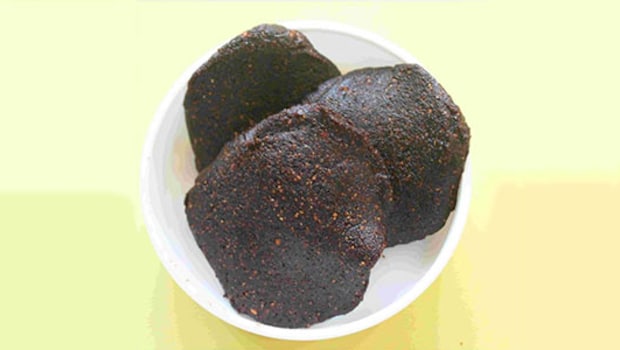I still remember the first time I tried pounding rice into rice flour with a large mortar and pestle. It was not in a village in Tamil Nadu, but a resort in southern Sri Lanka where the Chef still clings on to his childhood memories and his pestle. It's the same type of stone pestle that is used to this day at my friend Dhivya's village near Dindigul to make one of Tamil Nadu's most traditional snacks- Elantha Vadai.
(Also Read: South Indian Recipes: 5 Fried South Indian Snacks That Are Perfect For Every Season)
There are many traditional delicacies from the state that are getting a fresh lease of life; nostalgia is indeed a powerful tool. Many kids like my friend Dhivya who grew up in 1990s Tamil Nadu remember elantha vadai almost as fondly as cut raw mangoes served with salt and chilli powder or kadalai mittai (peanut candy). Simple pleasures that created endearing memories way before we heard of catch phrases like foodie or foodporn. In fact many push carts also sell elantha pazham along with raw mango.

Elantha pazham is the Tamil name for jujube or ber - a tangy fruit from the buckthorn family that is also called red date or Chinese date. Jujube is deeply integrated in the food culture of India, the Middle East as well as China, South East Asia and Southern Europe. The first recipe for pate de jujubes - the precursor to the modern jujube candy as we know it, was published in 1709 and contained gum
Arabic, sugar and jujube fruit. Eventually this chewy candy dusted with sugar opted for artificial flavourings or other fruit extracts instead of jujube fruit. The Elantha vadai hasn't changed for decades, maybe centuries. Dindigul Manomani & Co, continues to use the traditional recipe. The Elantha vadai combines sweet, spicy and tangy flavours and never fails to
(Also Read: Peerkangai Kootu, This South Indian Stew Is A Treasure Of Protein And Fibre)
produce 'Instagram worthy' reactions especially the first time you experience this heady burst of flavours. Dhivya also reminisces of elantha pazham pickle that's a gooey version of the candy that used to be packed in tiny plastic sachets and dangle in tiny
stores along with shampoo sachets. It's also common to see this candy at bus stops in Southern Tamil Nadu, many locals believe that it prevents nausea on road trips. The jujube fruit is a storehouse of Vitamin C, Calcium and Iron, making this a healthy snacking option.
In many small towns and villages in Tamil Nadu, this candy or snack is made by pounding jujube fruit or elantha pazham with jaggery, chillies
(I've seen both red chillies and green chillies used) and salt in a stone pestle. Of course, you can order it online or try making at home if you can source the seasonal elantha pazham. You can tweak the recipe depending on whether you want a sweet or spicy version by playing around with the quantity of jaggery or chillies.
Elantha Vadai recipe:
- Ingredients
- 250 grams Elantha pazham (jujube)
- 2 tsp Asafoetida Powder
- 4 Red Chillies
- 3 tbsp Jaggery
- Salt as required
Instructions:
- Wash and dry the elantha pazham
- Add all the ingredients in a bowl and mash well with hands before transferring it to a mixer. Grind slightly to remove the seeds.
- Remove the seeds from the mixture.
- Transfer the pulp/mixture (after the seeds are removed) into the mixer and coarsely grind it. Do not blend it into a fine paste.
- Grease your hand with some oil and make lemon sized balls before you flatten them
- Put all the vadas in an oil greased plate or plastic sheet.
- Dry the vadas under direct sunlight for a day. (Do not keep the vadas under the sunlight for more than one day). Flip them once they get dry, so that the other side also gets dried.
- Place the vadas under the shade once they're dried and let it dry for another 2 to 3 days.
- Transfer the vadas to an airtight container and use it within two months.
About Ashwin RajagopalanI am the proverbial slashie - a content architect, writer, speaker and cultural intelligence coach. School lunch boxes are usually the beginning of our culinary discoveries.That curiosity hasn’t waned. It’s only got stronger as I’ve explored culinary cultures, street food and fine dining restaurants across the world. I’ve discovered cultures and destinations through culinary motifs. I am equally passionate about writing on consumer tech and travel.






